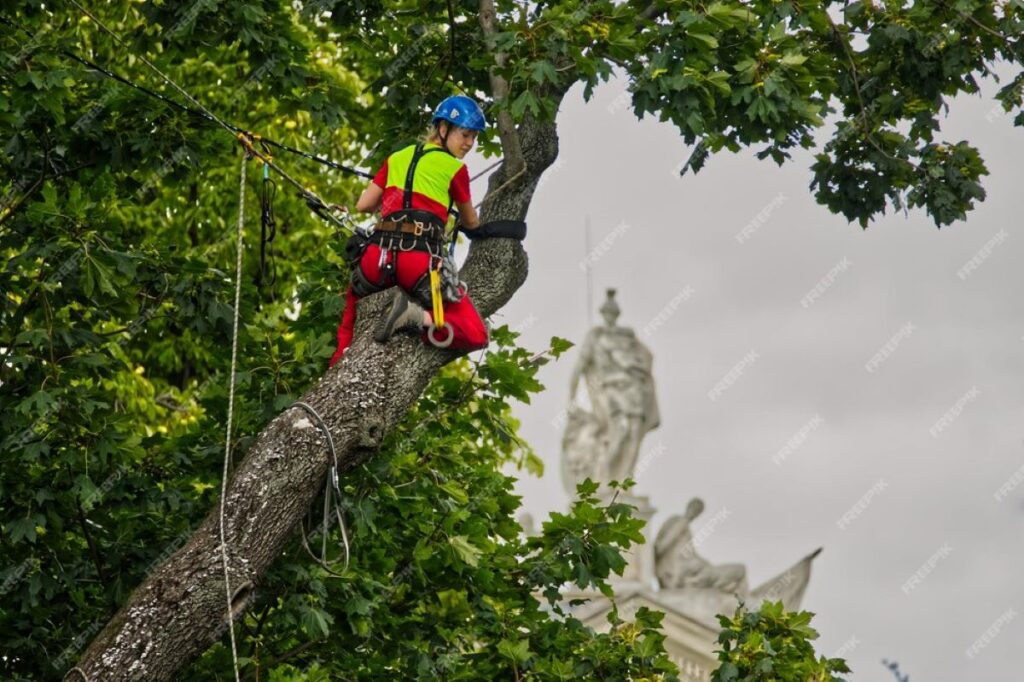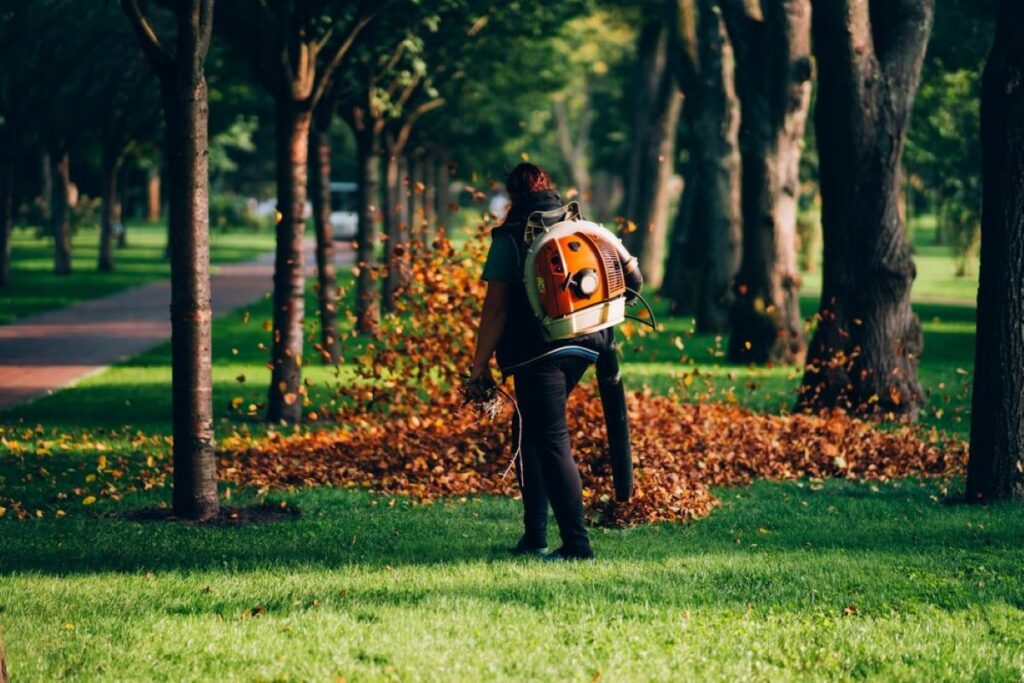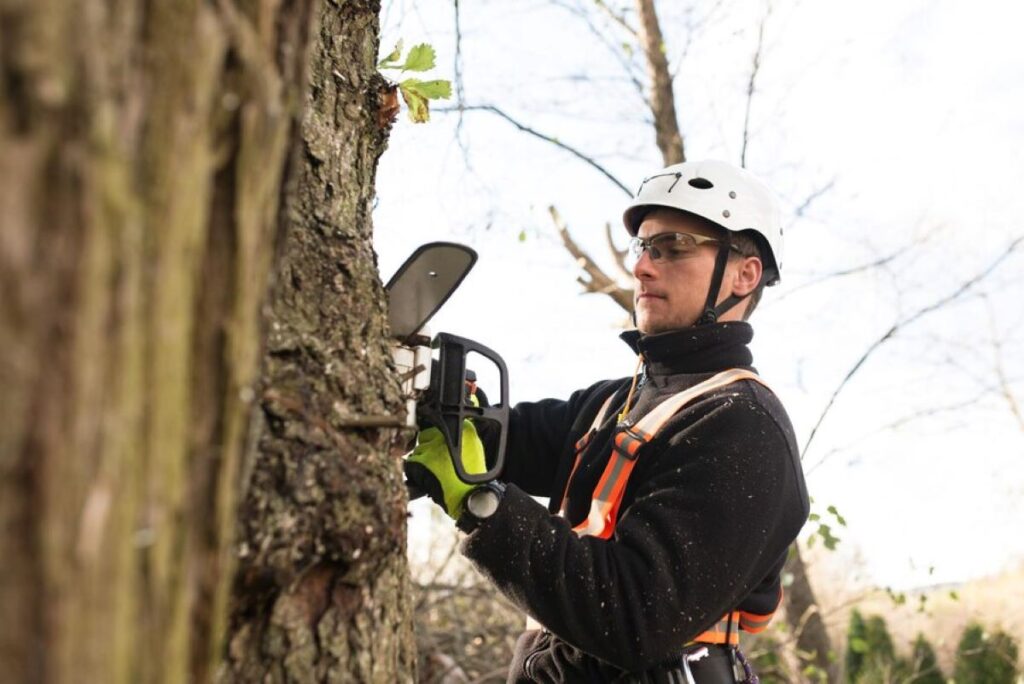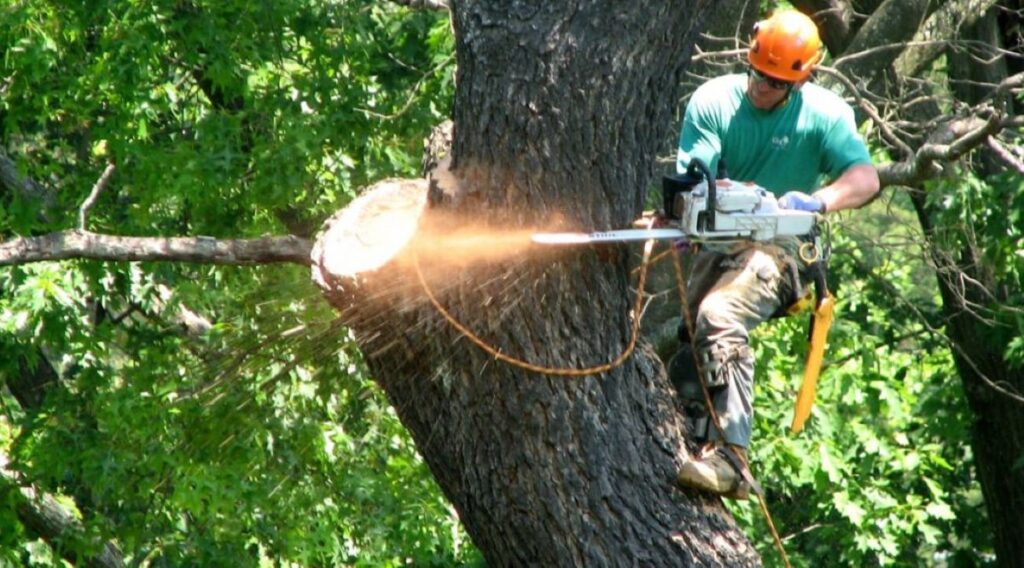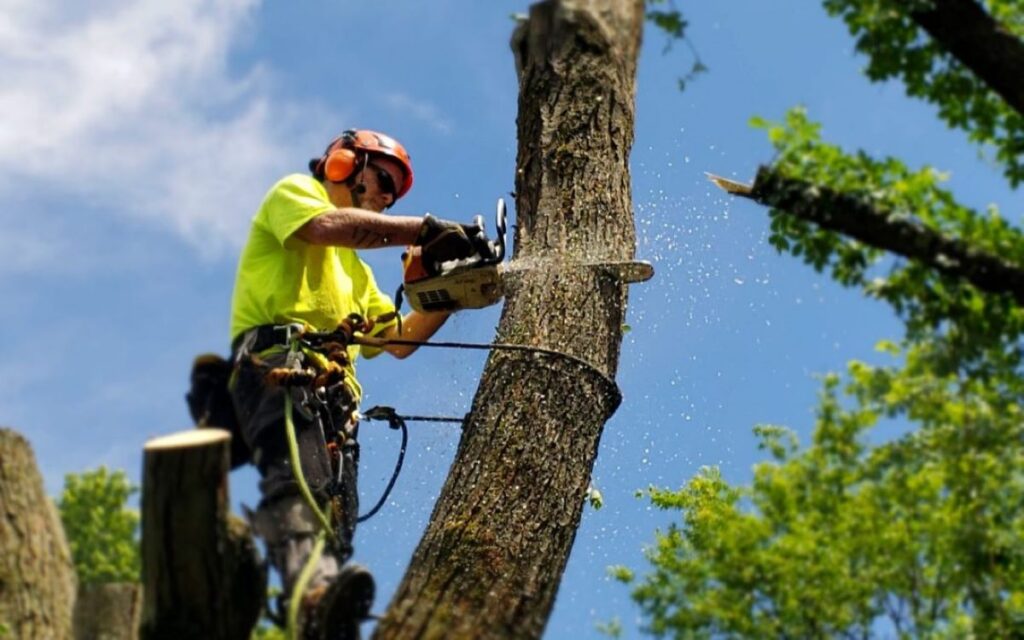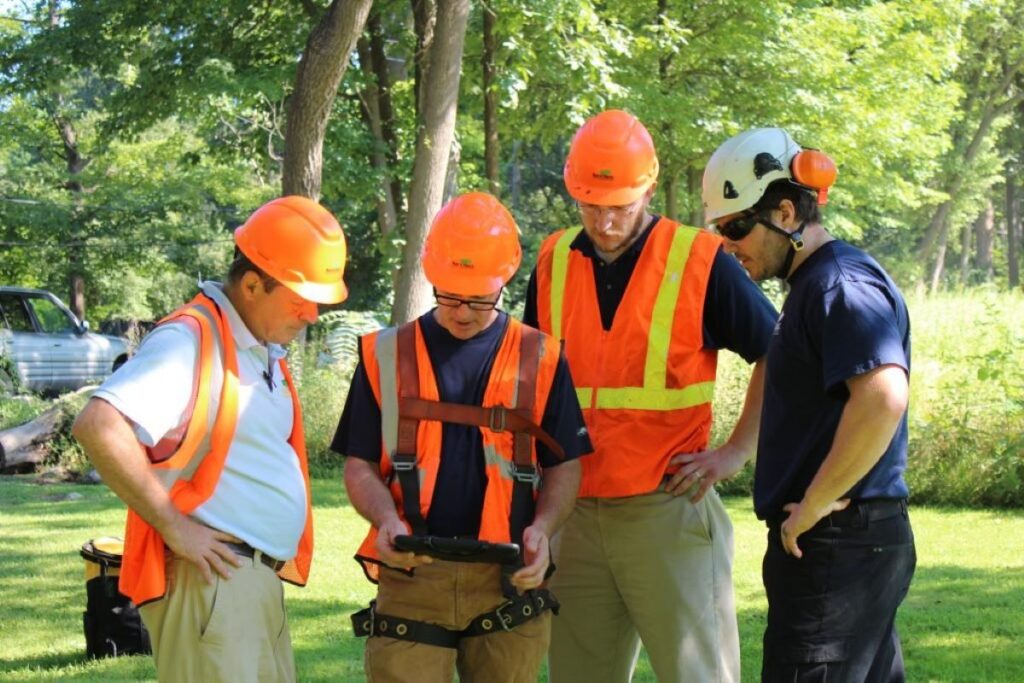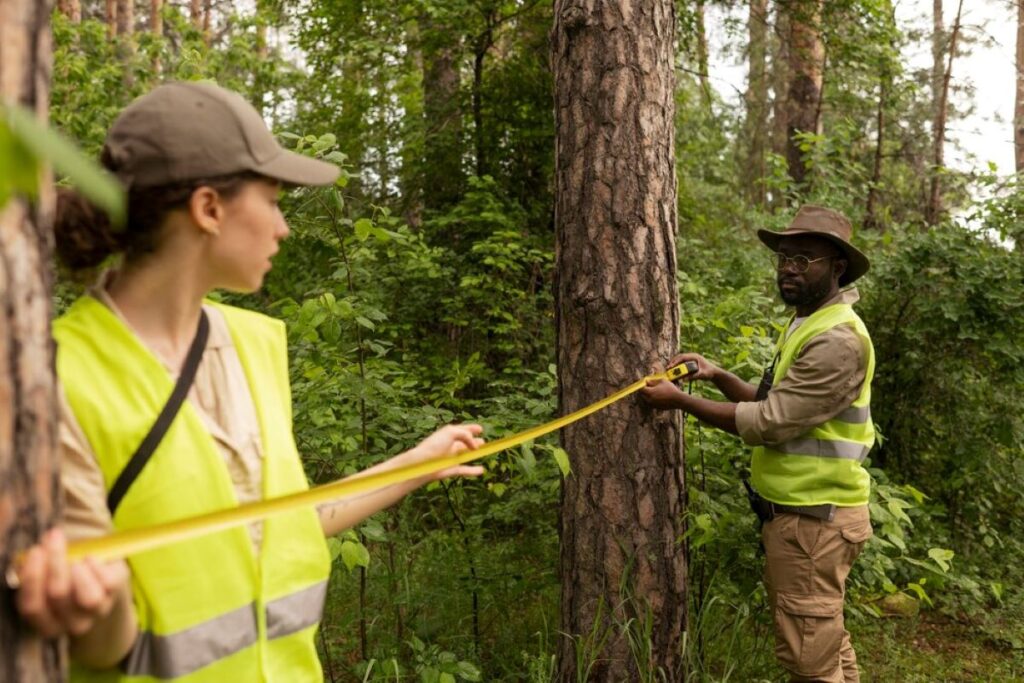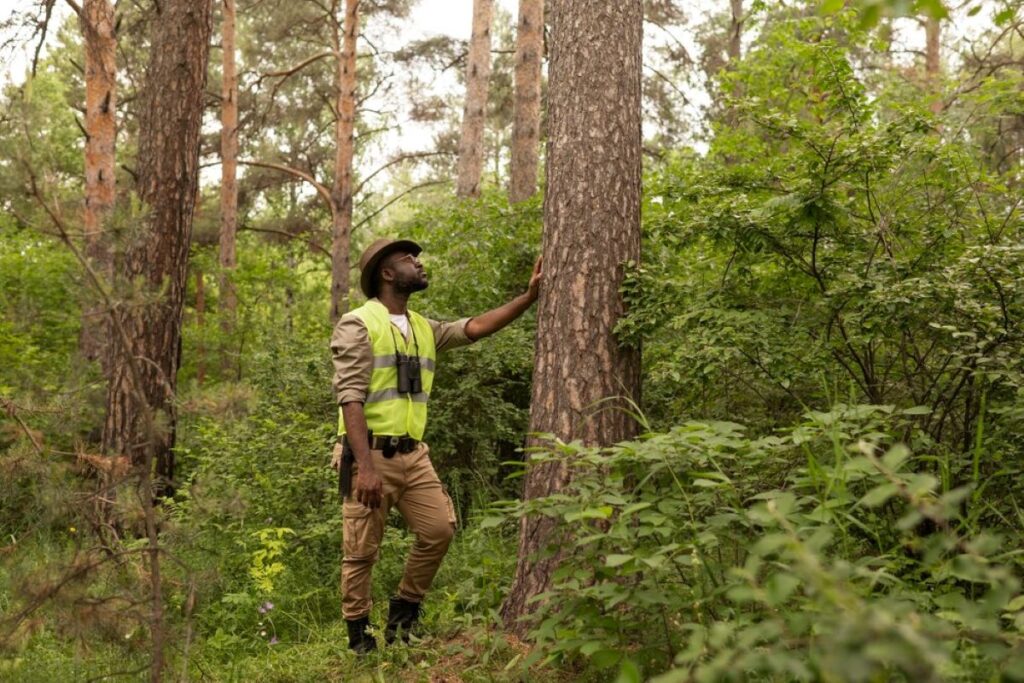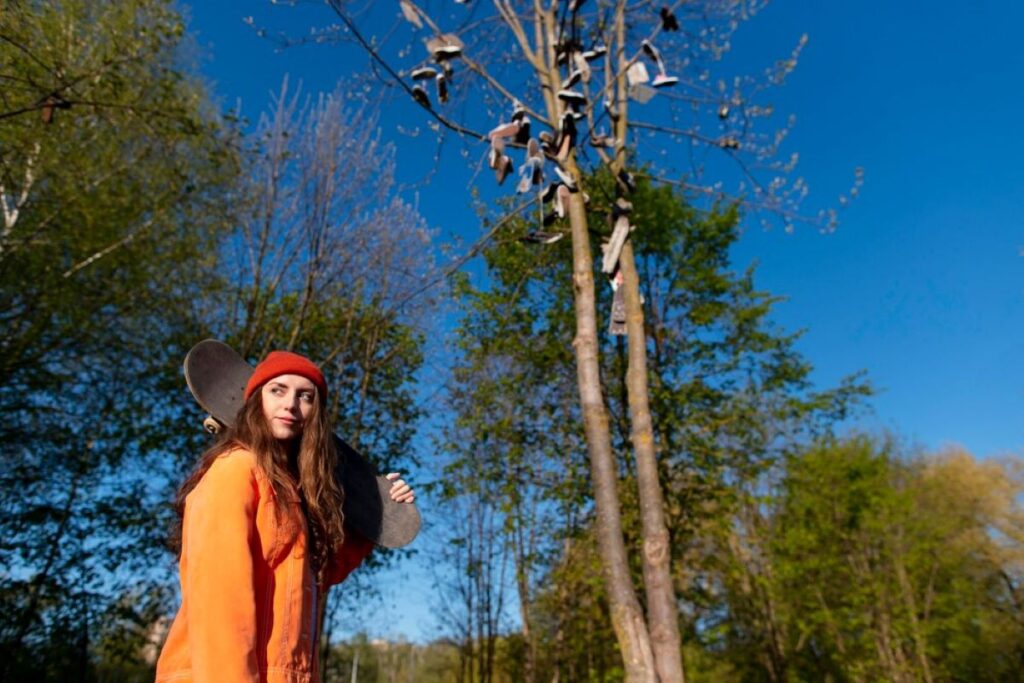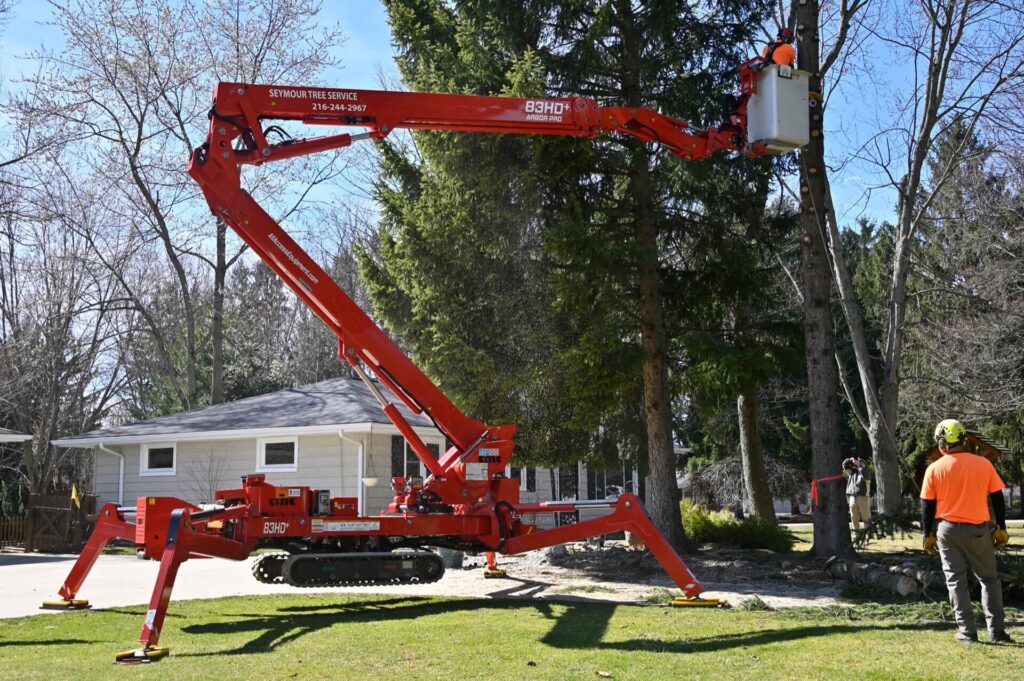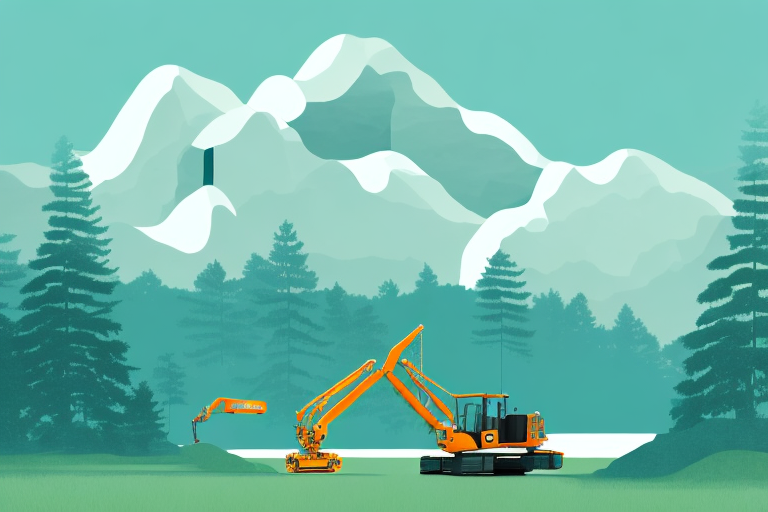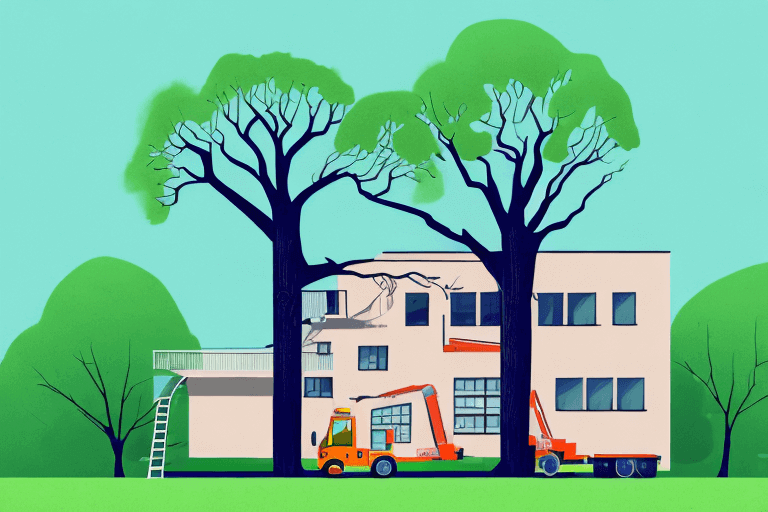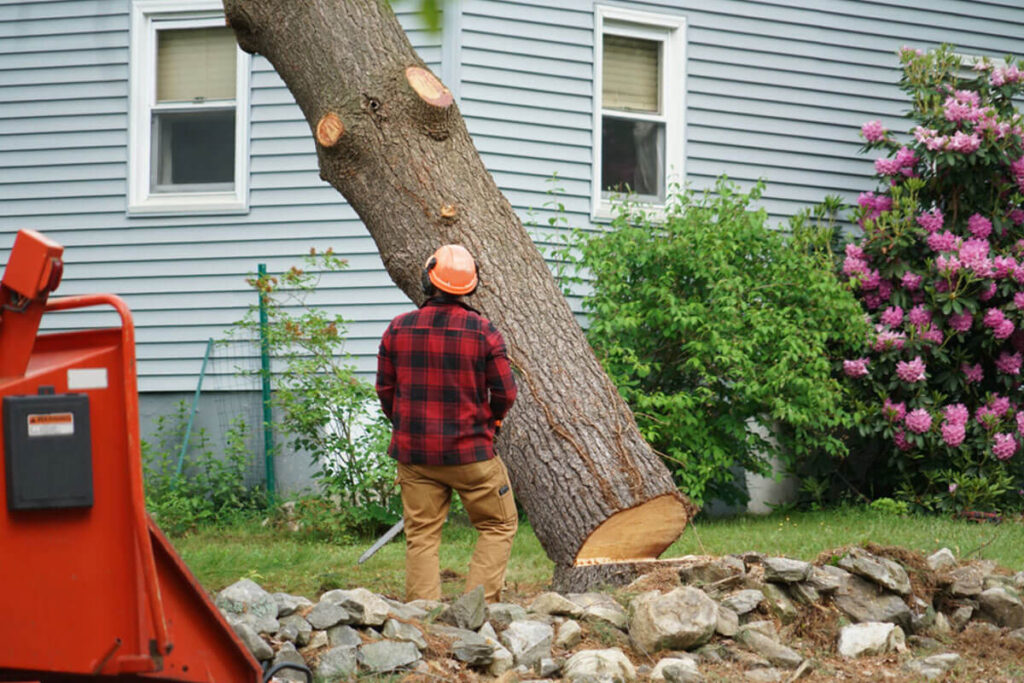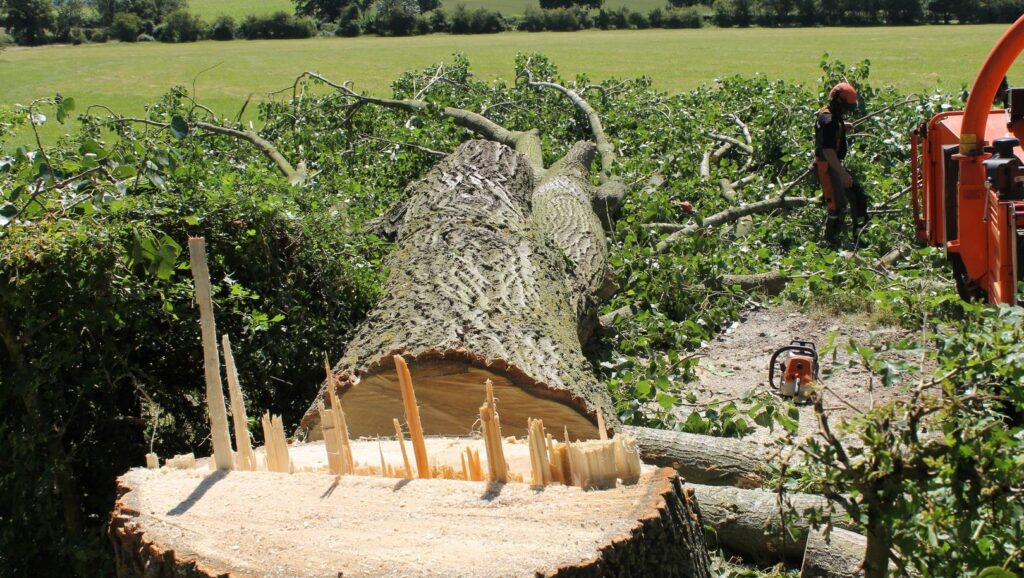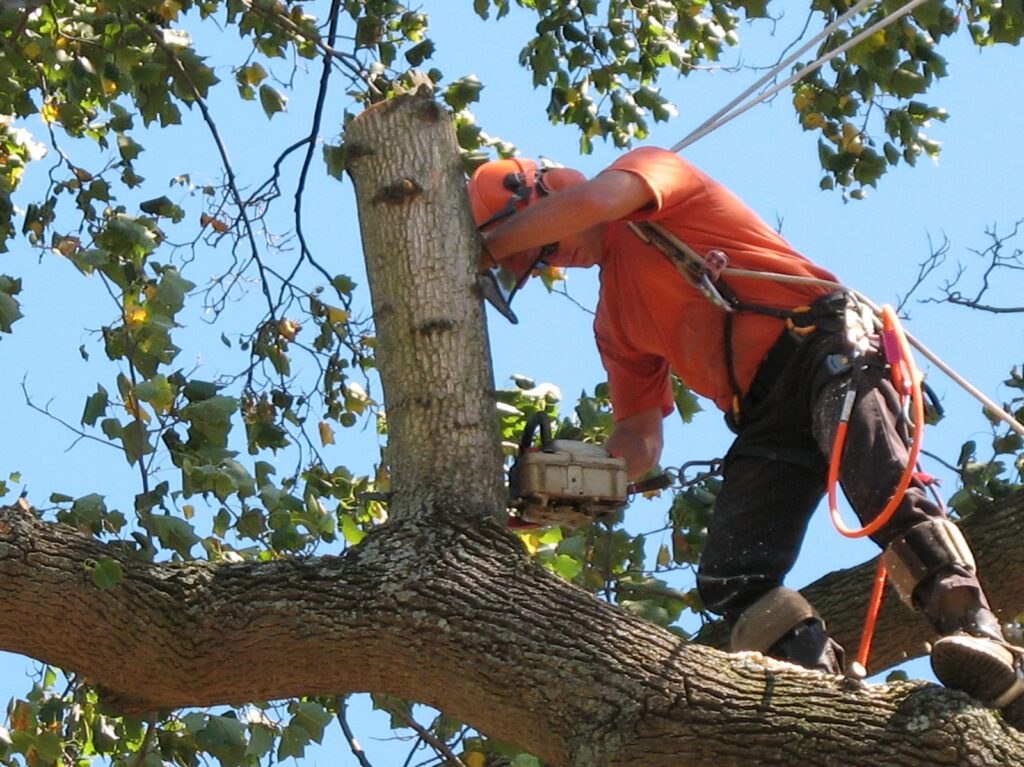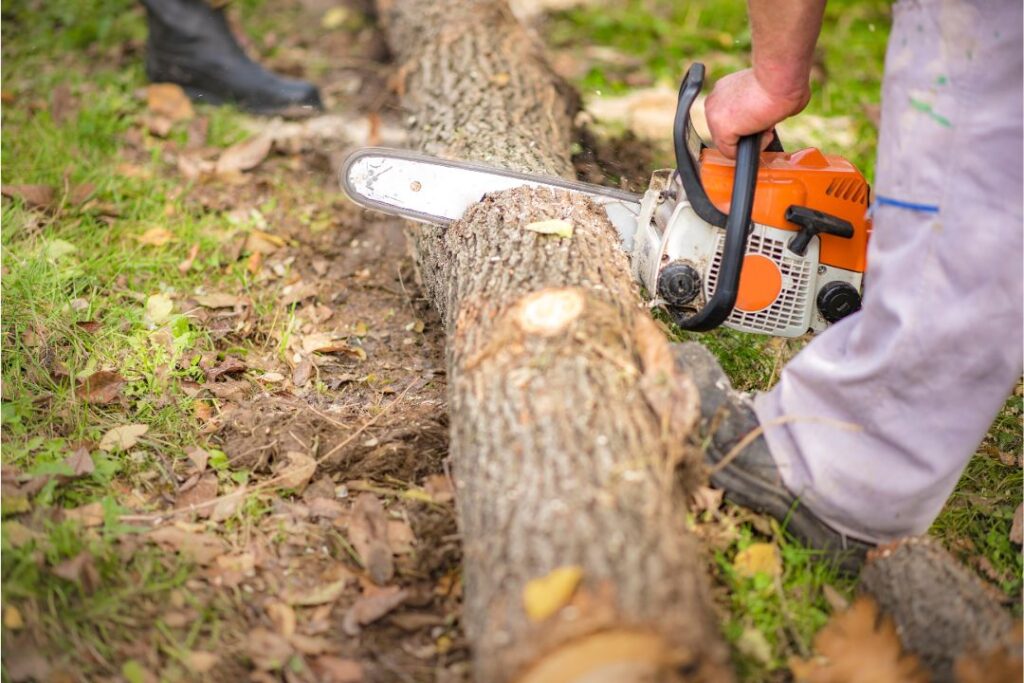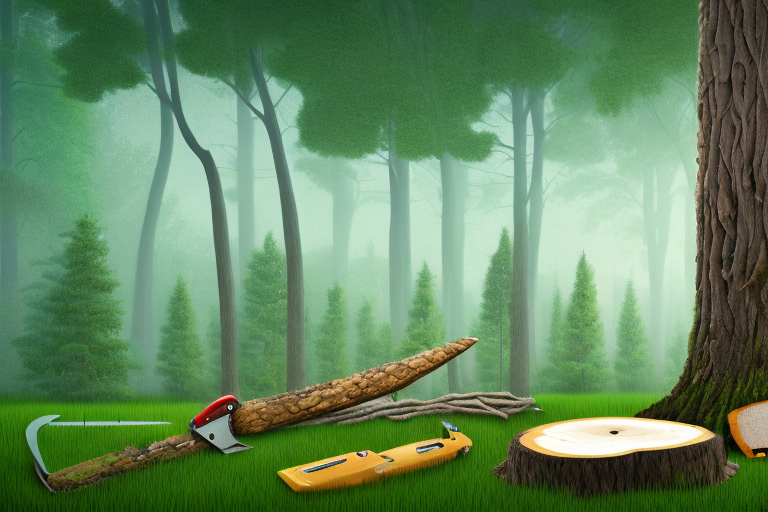How Tree Removal Services Can Protect Your Home and Garden
Trees are like natural protectors for homes in Sydney. They offer shade, beauty, and benefits to the environment. These magnificent plants create peaceful spaces, lower energy costs by keeping things cool naturally, and provide habitats for local wildlife.
However, there’s a hidden danger beneath their calm appearance. Unhealthy or invasive trees can go from being helpful to becoming serious threats:
- Damage to Structures: Aggressive roots can crack foundations and pavements
- Safety Risks: Dead branches may fall on property or people
- Unhealthy Gardens: Diseased trees can infect nearby plants
This is where professional tree removal services Sydney come into play. They are crucial in ensuring the safety and visual appeal of residential areas. These experts combine their technical skills with knowledge of the local environment to:
- Spot trees that pose a risk
- Carry out safe removal methods
- Keep the garden healthy
- Preserve the value of the property
- Follow council rules and regulations
By carefully examining each situation and taking strategic action, tree removal specialists assist homeowners in Sydney in striking a balance between enjoying the benefits of nature and safeguarding their investments in property.
What Risks Do Problematic Trees Pose to Homes and Gardens?
Problematic trees create significant hazards for Sydney homeowners, with invasive root systems ranking among the most destructive forces. These aggressive roots can:
- Crack and lift concrete footpaths
- Create uneven surfaces in driveways
- Penetrate and damage house foundations
- Rupture underground pipes and utilities
- Destabilise retaining walls
Dead or rotting trees present another set of critical risks to properties. These compromised trees:
- Attract wood-boring insects and harmful pests
- Harbour fungi and diseases that spread to healthy plants
- Divert essential nutrients from surrounding vegetation
- Create soil instability through root decay
- Release harmful spores affecting air quality
The dangers of damaged or uprooted trees in residential areas extend beyond property damage. These hazards include:
- Sudden branch failures during storms or high winds
- Potential injuries to residents and passersby
- Power line interference causing electrical hazards
- Blocked access to driveways and emergency exits
- Impact damage to neighbouring properties
Trees with structural weakness pose heightened risks during Sydney’s severe weather events. A compromised tree can topple without warning, causing catastrophic damage to homes, vehicles, and infrastructure. The combination of Sydney’s climate patterns and urban development makes professional assessment crucial for identifying these risks before they escalate into emergencies.
Moreover, it’s important to note that urban trees are not just aesthetic additions; they play a vital role in the ecosystem. However, when these trees become problematic due to disease, invasive roots, or structural weaknesses, they can pose significant risks to nearby homes and gardens.
How Do Tree Removal Services Assess Tree Health and Risk?
Professional tree experts, known as arborists, use systematic methods to evaluate the health of trees and any potential risks they may pose. Their assessment process includes:
- Visual inspection of the tree’s crown (the upper part of the tree), trunk, and root system
- Analysis of the condition of the bark and checking for any signs of decay
- Identifying any structural defects or symptoms of disease
- Assessing the conditions of the soil and stability of the roots
- Evaluating nearby infrastructure (such as buildings or power lines) and potential areas that could be affected by the tree
Criteria for Determining if a Tree Needs to be Removed
There are several factors that experts consider when deciding whether a tree needs to be removed:
1. Structural Integrity
- Presence of large dead branches
- Significant lean or unstable root system
- Multiple trunk splits or cavities
2. Disease Status
- Signs of fungal growth
- Pest infestations
- Bacterial infections
3. Environmental Factors
- Proximity to buildings or power lines
- Soil erosion or compaction
- Susceptibility to weather damage
Tools and Techniques Used by Arborists
During their assessments, expert arborists use specialised tools and techniques to get a better understanding of the condition of the tree:
- Resistograph testing for detecting internal decay
- Sonic tomography for analysing the trunk
- Root collar excavation methods for examining the roots
- Digital imaging for detailed documentation
These thorough evaluations help determine whether trees need to be removed or if they can be saved through targeted maintenance. Professional assessments not only protect property value but also ensure the safety of residents by identifying potential hazards before they cause any damage.
Importance of Detailed Records and Management Plans
Arborists in Sydney keep detailed records of their assessments, creating management plans that take into account both immediate risks and long-term implications for tree health. Their expertise helps property owners make informed decisions about the future of their trees.
What Are the Differences Between Tree Removal and Tree Lopping?
Tree removal and tree lopping serve distinct purposes in maintaining Sydney properties. Understanding these differences helps property owners make informed decisions about their tree care needs.
Complete Tree Removal
- Involves total elimination of the tree from the property
- Includes removal of the entire structure: branches, trunk, and root system
- Requires stump grinding or extraction to prevent regrowth
- Leaves the area ready for new landscaping or construction
Tree Lopping
- Reduces the size of trees through strategic cutting
- Preserves the tree’s core structure and root system
- Focuses on removing specific branches or sections
- Maintains the tree’s health while managing its growth
Appropriate Scenarios for Each Service
Tree Removal
- Dead or severely diseased trees
- Trees threatening structural integrity
- Preparation for construction projects
- Trees growing too close to power lines
- Invasive species causing property damage
Tree Lopping
- Healthy trees requiring size management
- Trees blocking sunlight or views
- Preventive maintenance for storm protection
- Shape enhancement for aesthetic purposes
- Growth direction control for safety
Professional arborists assess each situation to recommend the most suitable approach, considering factors such as tree health, location, and property requirements. Sydney’s local council regulations guide these decisions, ensuring all tree work complies with environmental protection standards.
Why Is Hiring Professional Tree Removal Services in Sydney Essential?
Professional tree services in Sydney provide crucial benefits that extend beyond simple tree maintenance. Licensed arborists bring expertise and specialised knowledge to protect both property and people.
Key Benefits of Professional Tree Services:
1. Property Value Enhancement
- Strategic tree placement and maintenance
- Improved curb appeal
- Enhanced landscape aesthetics
2. Time and Resource Efficiency
- Access to professional-grade equipment
- Skilled teams for swift completion
- Proper waste disposal methods
Legal Compliance and Protection
Sydney’s local councils maintain strict regulations regarding tree removal and maintenance. Professional services:
- Secure necessary permits and approvals
- Navigate complex council requirements
- Provide documentation for compliance
- Carry appropriate insurance coverage
Environmental Responsibility
Licensed arborists contribute to environmental sustainability through:
- Selective removal practices
- Preservation of healthy specimens
- Proper disposal of green waste
- Expert advice on replacement plantings
Professional tree services also safeguard property owners from potential legal issues. Their comprehensive insurance coverage protects against:
- Property damage
- Personal injury claims
- Workers’ compensation matters
- Public liability concerns
The expertise of qualified arborists ensures proper tree health assessment, safe removal procedures, and maintenance practices that align with local environmental standards.
When Should Homeowners Consider Hiring Tree Removal Experts?
Homeowners need to recognise specific warning signs that indicate the necessity for professional tree removal services in Sydney. Trees displaying these critical symptoms require immediate attention:
1. Dead or Dying Trees
Look out for the following signs:
- Bare branches during the growing season
- Peeling bark
- Visible decay or fungal growth
- Discoloured or dropping leaves out of season
2. Structural Issues
Pay attention to any of these structural problems:
- Leaning trunk at an unusual angle
- Exposed or damaged root system
- Multiple trunks with weak attachment points
- Large cracks or splits in the trunk
3. Disease and Pest Infestation
Be on the lookout for signs of disease and pest infestation:
- Holes in the trunk or branches
- Sawdust-like material around the base
- Unusual growths or swelling
- Signs of insect activity
Construction projects and property improvements also necessitate tree removal services. These situations include:
- Building extensions or renovations
- Installation of new driveways or pathways
- Pool construction
- Landscape redesign
- Underground utility work
Swift action prevents escalating problems such as:
- Property damage from falling branches
- Root intrusion into foundations
- Spread of disease to healthy trees
- Increased removal costs due to deterioration
- Safety risks to residents and neighbours
Professional arborists assess these situations and determine whether removal represents the most appropriate solution for the property’s safety and aesthetic value.
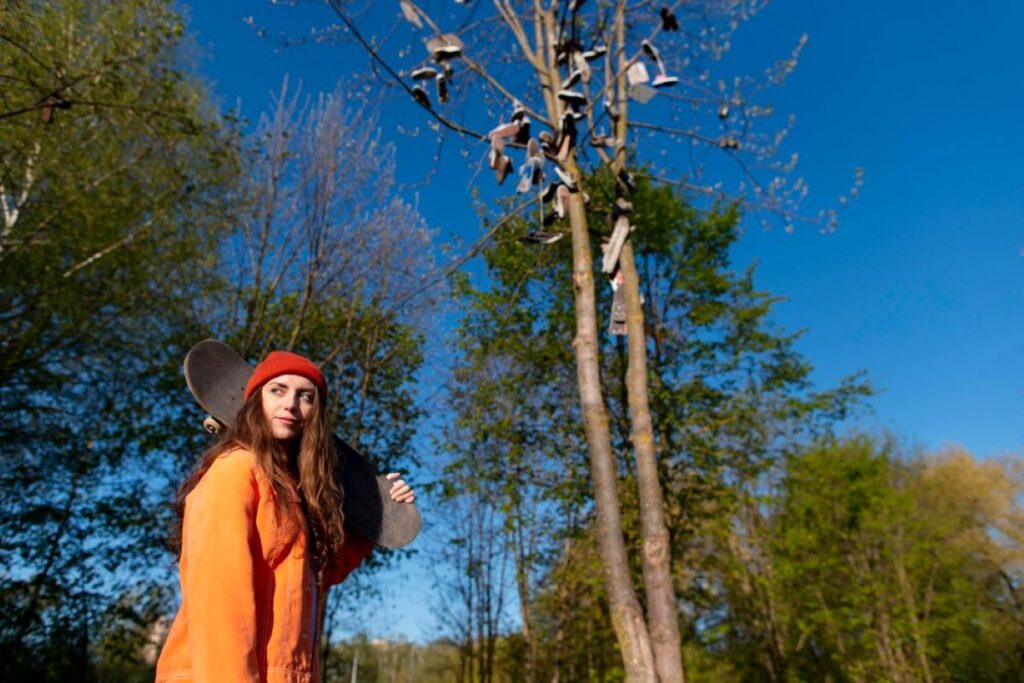
How Do Tree Removal Companies Ensure Safety and Compliance in Sydney?
Professional tree removal companies in Sydney implement comprehensive safety protocols to protect properties, workers, and residents during operations. Their risk management plans include:
1. Pre-work Site Assessment
Before any tree removal work begins, the company conducts a thorough assessment of the site to identify potential hazards and evaluate the surrounding structures. This includes checking for underground utilities and monitoring weather conditions.
2. Equipment and PPE Requirements
To ensure the safety of their workers, tree removal businesses have specific requirements for equipment and personal protective equipment (PPE). This includes using safety harnesses for elevated work, wearing high-visibility clothing, hard hats, steel-capped boots, and chainsaw protective gear.
3. Insurance Coverages
Tree removal businesses maintain multiple insurance coverages to protect themselves and their clients. This includes public liability insurance with a minimum coverage of $20 million, professional indemnity insurance, workers’ compensation, and equipment and vehicle insurance.
4. Documentation and Approvals
Sydney’s local councils require specific documentation and approvals for tree removal activities. This includes obtaining tree removal permits, ensuring compliance with heritage conservation regulations, conducting environmental impact assessments, and adhering to noise regulations.
5. Documentation by Licensed Arborists
Licensed arborists are responsible for documenting each step of the tree removal process. This includes taking photographic evidence, conducting written risk assessments, preparing method statements, and completing safety checklists.
6. Supervision and Compliance Monitoring
Qualified supervisors are employed by tree removal companies to monitor operations and ensure compliance with Australian Standards AS4373-2007 for tree pruning and removal practices. The presence of certified safety officers on-site also helps maintain strict adherence to Work Health and Safety regulations throughout the removal process.
What Services Beyond Tree Removal Do Professionals Offer?
Professional tree services extend far beyond basic removal operations. They offer a range of specialised services to ensure the health and beauty of your outdoor space.
Stump Grinding
After a tree is removed, the stump remains as an unsightly reminder of its presence. This is where stump grinding comes into play. Using advanced machinery, professionals grind down the stump below ground level, effectively erasing any trace of the tree. The benefits of stump grinding include:
- Pest Prevention: Stumps can attract pests like termites and wood-boring insects, which may pose a threat to nearby structures. By grinding the stump, you eliminate this potential infestation risk.
- Aesthetic Appeal: An exposed stump can be an eyesore in your garden or landscape. Stump grinding restores the visual appeal by creating a level surface that blends seamlessly with the surrounding area.
- Landscaping Opportunities: Once the stump is gone, you have more flexibility in designing your outdoor space. Whether it’s planting new trees, creating flower beds, or installing pathways, stump grinding opens up possibilities for landscaping enhancements.
Green Waste Management
Tree removal often generates a significant amount of green waste such as branches, leaves, and other organic materials. Proper disposal of this waste is crucial for environmental sustainability. Certified arborists employ eco-friendly methods to manage green waste:
- Mulching: Instead of sending branches and leaves to landfills, professionals can chip them into mulch on-site. This mulch can then be used as a natural weed suppressant and moisture-retaining layer in gardens.
- Firewood Production: If there are large logs from fallen trees or pruned branches, they can be processed into firewood. This not only reduces waste but also provides a sustainable source of energy for heating.
- Recycling Initiatives: Some tree services partner with local recycling facilities to ensure that wood waste is repurposed into products like furniture or paper. By diverting these materials from landfills, we contribute to a circular economy.
Site Assessment and Recommendations
After removing a tree, it’s essential to evaluate the site for any potential issues or opportunities. Qualified arborists conduct thorough assessments to provide tailored recommendations:
- Soil Analysis: Understanding the soil condition and composition is vital for successful replanting efforts. Arborists can test pH levels, nutrient content, and drainage capabilities to determine suitable plant species.
- Vegetation Health Check: Surrounding plants may have been affected by the presence of the removed tree. Assessing their health helps identify any necessary interventions such as pruning or fertilisation.
- Replanting Strategies: If you wish to replace the removed tree with another one, professionals can suggest appropriate species based on factors like climate suitability and space availability.
Expert Guidance on Tree Care
Removing a tree doesn’t mean you’re done with it entirely; proper care is still required for existing trees on your property. Professional services often offer expert advice on various aspects of tree maintenance:
- Species-Specific Knowledge: Different tree species have unique requirements when it comes to watering, pruning, and pest management. Arborists possess in-depth knowledge about these specific needs.
- Disease Identification: Early detection of common tree diseases can prevent further
How Can Choosing the Right Trees Benefit Your Garden’s Health?
Selecting appropriate trees for Sydney gardens plays a vital role in maintaining a thriving, sustainable landscape. Native and non-invasive species create harmonious garden environments while minimising potential structural damage to properties.
Recommended Trees for Sydney Gardens:
- Japanese Maple (Acer palmatum) – compact root system, ideal for small spaces
- Crepe Myrtle (Lagerstroemia indica) – shallow roots, drought-tolerant
- Dwarf Lilly Pilly (Syzygium australe) – native species with contained root spread
- Magnolia Little Gem – manageable size, non-aggressive roots
- Flowering Plum (Prunus cerasifera) – suitable for residential areas
Benefits of Strategic Tree Selection:
- Reduced risk of foundation damage
- Lower maintenance requirements
- Enhanced soil stability
- Improved biodiversity
- Better drought resistance
Professional arborists recommend conducting soil tests and site assessments before planting. These evaluations help determine optimal tree placement and species selection based on:
- Available space for canopy spread
- Underground utilities location
- Soil type and drainage patterns
- Local climate conditions
- Existing vegetation
Sydney gardens thrive with trees that complement their surroundings. Proper species selection creates long-term benefits, reducing the need for future removal or extensive maintenance. Professional arborists provide valuable guidance on selecting trees that align with specific garden requirements and local environmental conditions.
What Steps Should Homeowners Take When Hiring Tree Removal Services in Sydney?
A systematic approach to selecting tree removal services helps Sydney homeowners secure reliable, professional assistance for their properties.
Essential Research Steps:
- Read customer testimonials across multiple platforms
- Check ratings on trusted business review sites
- Request references from previous clients
- Examine before-and-after photos of completed projects
Credential Verification:
- Valid public liability insurance (minimum $20 million coverage)
- Workers’ compensation insurance
- Current arborist certifications
- Local council work permits
Local Expertise Assessment:
- Knowledge of Sydney’s native tree species
- Understanding of local council regulations
- Experience with area-specific challenges
- Proven track record in similar neighbourhoods
Quote Requirements:
The detailed quote should specify:
- Equipment types and conditions
- Personal protective gear for workers
- Waste disposal methods
- Project timeline
- Breakdown of costs
- Safety protocols
Professional tree removal services maintain transparent communication throughout the hiring process. Reputable companies provide written documentation of their qualifications and detailed work proposals. Sydney homeowners benefit from selecting services that demonstrate commitment to environmental preservation while maintaining high safety standards.
A thorough evaluation of these elements ensures homeowners receive qualified assistance for their tree removal needs. The investment in proper research protects both property and peace of mind.
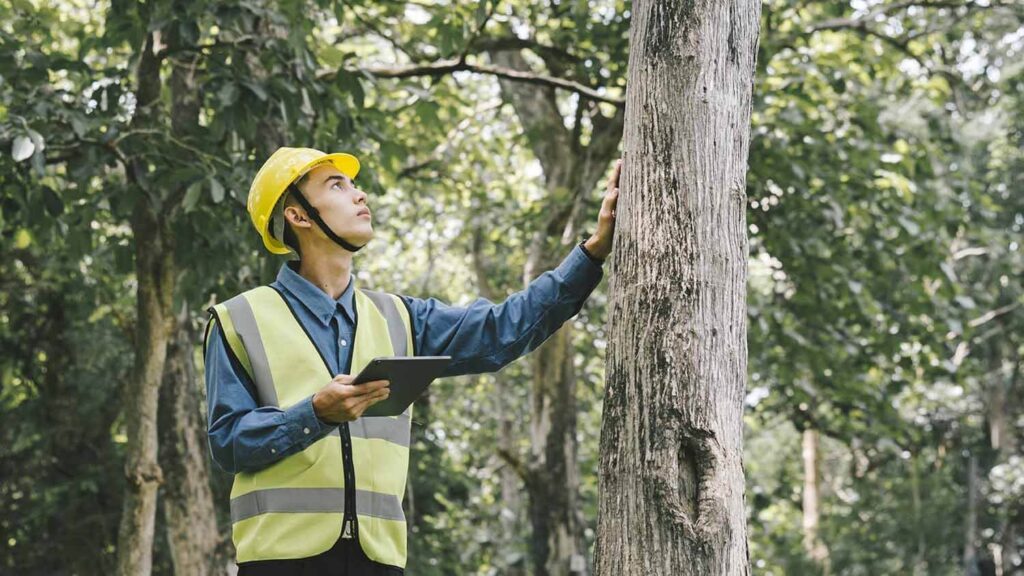
How Do Tree Removal Services Contribute to a Healthier Home Environment?
Professional tree removal services play a vital role in creating a healthier living space for Sydney homeowners. A well-maintained garden ecosystem supports both physical and mental wellness through multiple pathways.
1. Air Quality Enhancement
Selective tree removal allows remaining vegetation to thrive, leading to improved air filtration and oxygen production. Healthy trees absorb pollutants and release clean air, creating a fresher outdoor environment for families.
2. Safety and Peace of Mind
Removing hazardous trees eliminates:
- Risk of falling branches
- Potential structural damage
- Trip hazards from exposed roots
- Pest infestations
3. Mental Health Benefits
A properly maintained garden serves as a therapeutic sanctuary where families can:
- Practice mindfulness
- Reduce stress levels
- Connect with nature
- Enjoy outdoor relaxation
4. Family Bonding Through Gardening
The space created by professional tree removal opens opportunities for:
- Growing vegetables and herbs
- Creating flower gardens
- Building children’s play areas
- Establishing outdoor entertainment zones
5. Cost-Effective Garden Management
Strategic tree removal reduces long-term maintenance costs by:
- Preventing property damage
- Lowering water consumption
- Minimising pest control needs
- Reducing leaf litter cleanup
The balanced approach of professional tree services helps maintain ecosystem harmony while creating safe, enjoyable outdoor spaces that benefit both physical health and emotional wellbeing.
Why Professional Tree Services Are Essential for Sydney Homeowners
Professional tree removal services in Sydney are crucial for ensuring the safety of homes and the health of gardens. Licensed arborists have the expertise, equipment, and knowledge of local regulations to handle tree-related tasks effectively. They not only protect homes from potential dangers but also maintain the natural beauty of Sydney’s landscapes.
The decision between attempting tree care on your own or hiring professionals can have significant effects on:
- The value and appearance of your property
- The safety and well-being of your family
- Your compliance with local laws
- The long-term sustainability of your garden
By working with qualified tree care experts, Sydney homeowners are making an investment in their property’s future. These specialists provide comprehensive services that include assessing trees, removing them if necessary, and offering ongoing maintenance advice. Their efforts result in outdoor spaces that are safer and healthier for families to enjoy for years to come.
More to Read : Tree Cutting Tips Every Homeowner Should Consider Before Starting

